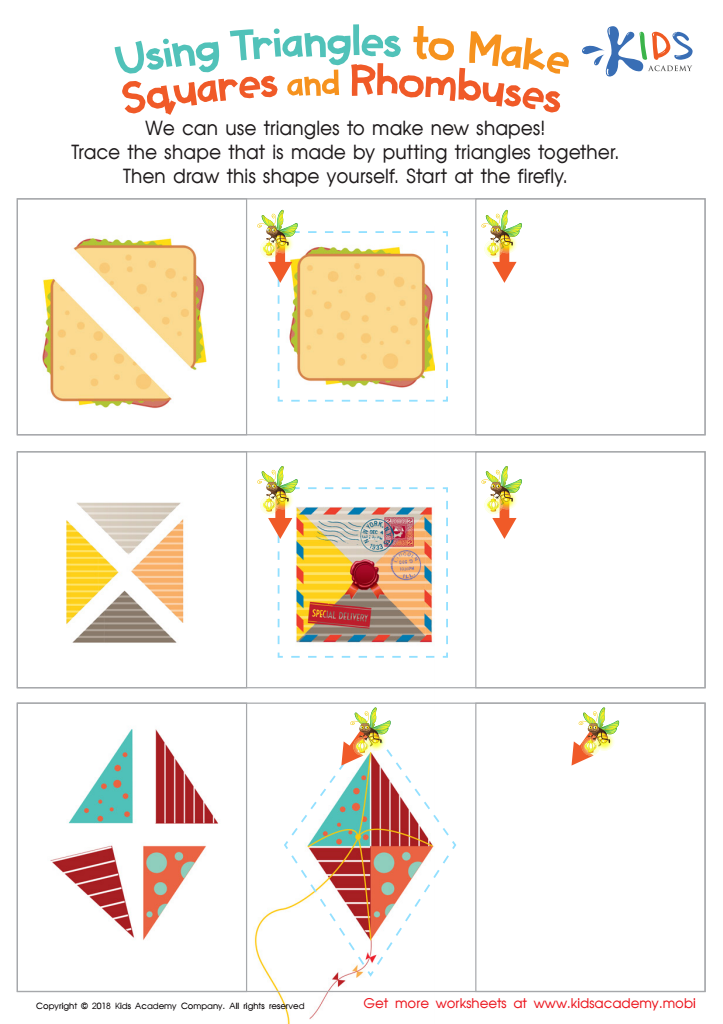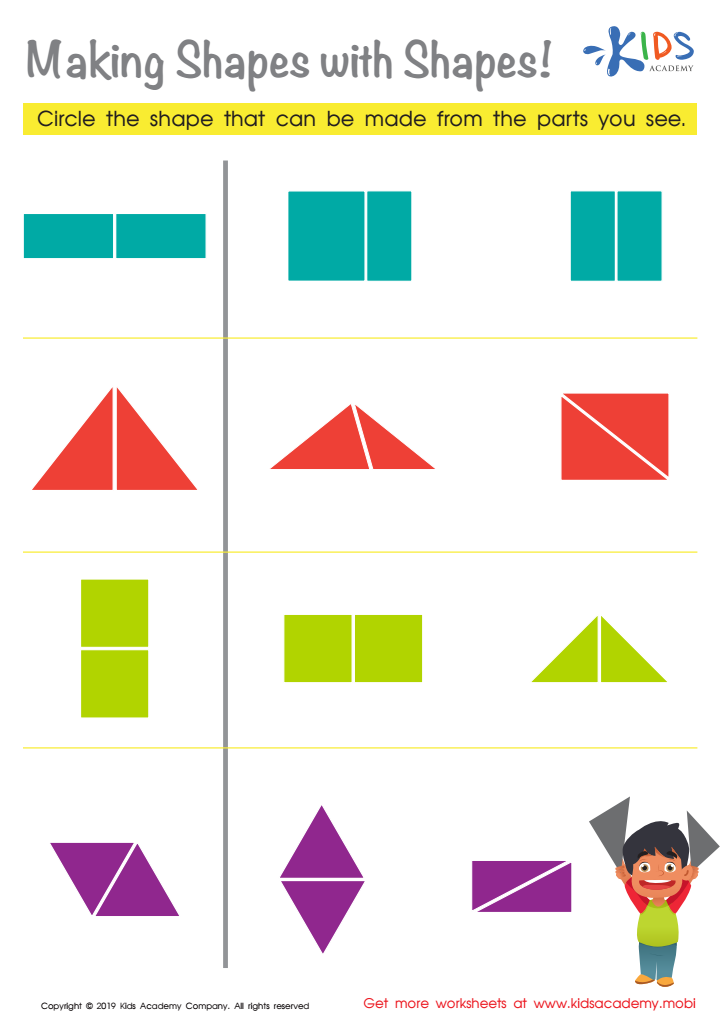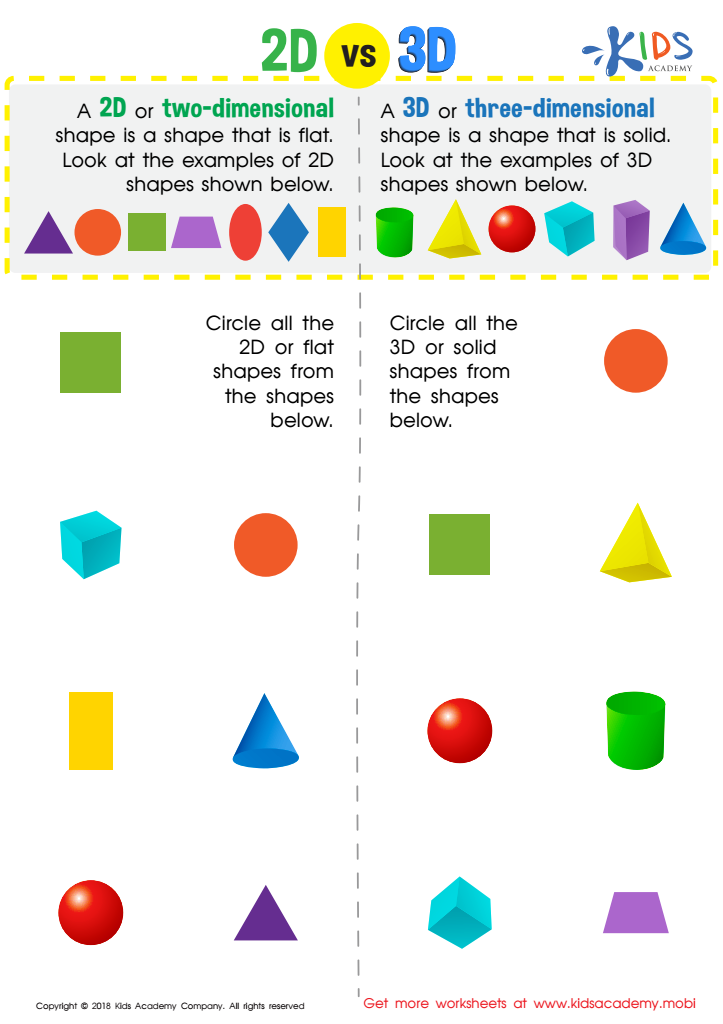Spatial understanding Geometry Worksheets for Ages 4-8
3 filtered results
-
From - To
Explore our engaging Spatial Understanding Geometry Worksheets designed for children ages 4-8! These worksheets provide young learners with fun, hands-on activities that enhance their spatial awareness and geometric skills. Each worksheet is crafted to help kids recognize shapes, understand spatial relationships, and develop critical thinking through interactive exercises. Perfect for home or classroom use, our resources encourage creativity and problem-solving while reinforcing foundational math concepts. These worksheets support early math development in a stimulating way, making learning enjoyable and effective. Download our Spatial Understanding Geometry Worksheets to make geometry a fun adventure for your little mathematicians today!


Using Triangles to Make Squares and Rhombuses Worksheet


Making Shapes with Shapes Worksheet


2D vs 3D Shapes Worksheet
Parents and teachers play a crucial role in fostering spatial understanding and geometry skills in children aged 4-8, which lays a foundation for future learning in mathematics and science. Early spatial skills are closely linked to cognitive development, critical thinking, and problem-solving abilities. Children who engage with geometric concepts develop a better understanding of the world around them, enhancing their ability to visualize, reason, and manipulate objects in space.
Fostering spatial awareness helps children recognize shapes, sizes, and positions, which is essential for everyday tasks such as reading maps, understanding graphs, and even following directions. These skills also translate into academic success; studies show that children with strong spatial skills perform better in mathematics and related fields.
Additionally, geometric learning nurtures creativity by encouraging children to explore and construct shapes, fostering an enjoyment of learning through play. Parents can support this development by providing hands-on experiences using building blocks, puzzles, and art materials that stimulate spatial thinking. Teachers can integrate geometry into their curricula through engaging activities and discussions, reinforcing its relevance in various contexts. By prioritizing spatial understanding, adults can empower children with critical lifelong skills, preparing them for success in a rapidly evolving world.
 Assign to My Students
Assign to My Students






























